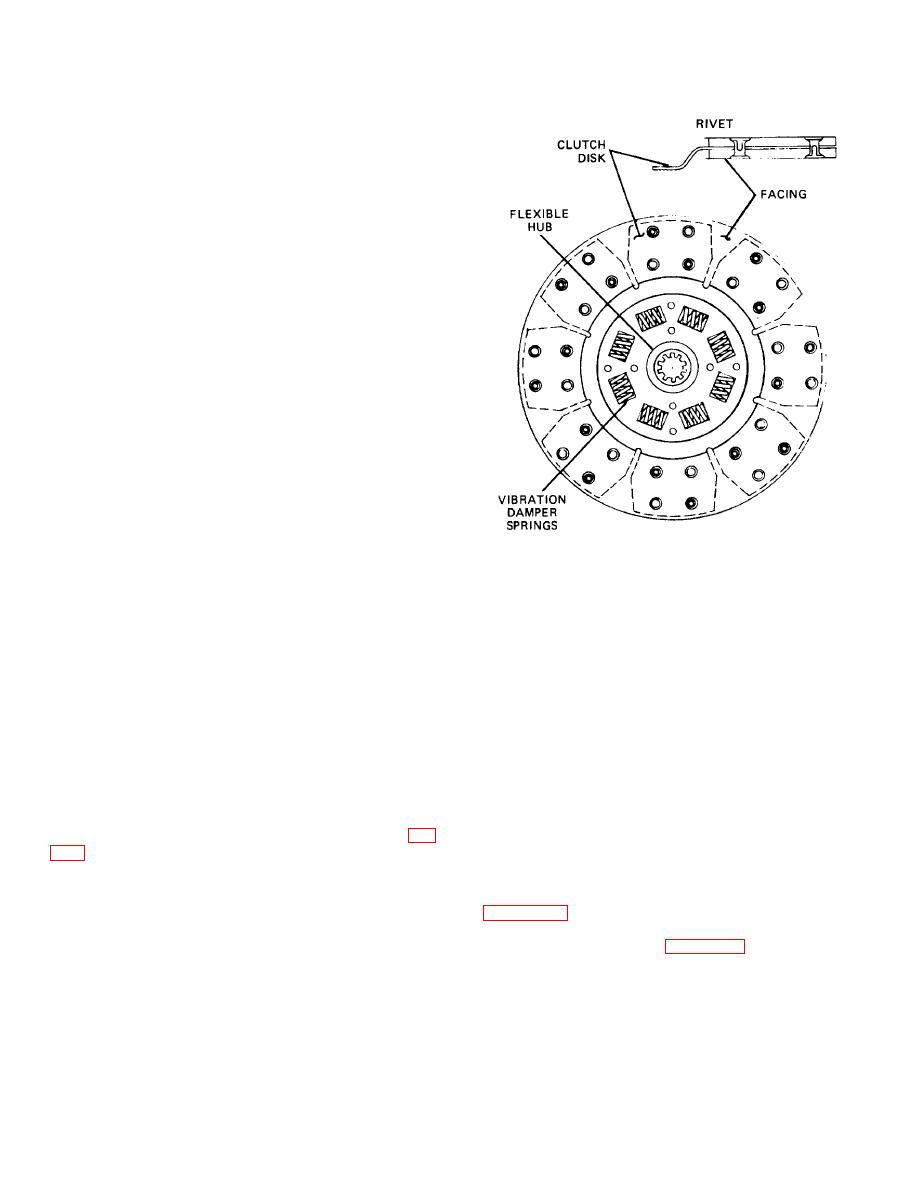
| Tweet |

Custom Search
|
|

|
||
 TM 9-8000
a. Driving Members. The driving members of a clutch
usually consist of two cast-iron plates or flat surfaces
machined and ground to a smooth finish. Cast iron is
recommended because it contains enough graphite to
provide some lubrication when the driving member is
slipping during engagement. One of these surfaces
usually is the rear face of the engine flywheel, and the
other is a heavy, flat ring with one side machined and
surfaced. This part is known as the pressure plate. It is
fitted into a steel cover, which also contains some of the
operating members, and is bolted to the flywheel.
b. Driven Members.
(1) The driven member is a disk with a splined hub that
is free to slide lengthwise along the splines of the clutch
shaft. These same splines also transmit torque from the
disk to the clutch shaft. (The driven member sometimes
is referred to as the clutch plate, but the word disk will be
used here to denote the driven member and thus
differentiate between this part and the clutch pressure
plate.) The clutch disk usually is made of spring steel in
the shape of a single flat disk of a number of flat
segments. Suitable frictional facings are attached to each
side of the disk by means of copper rivets. These facings
must be heat resistant because friction produces heat.
Figure 21-2. Clutch-Drive Plate with Flexible
The most commonly used facings are made of cotton
Center.
and asbestos fibers woven or molded together and
impregnated with resins or similar binding agents. Very
absorb the torsional vibration of the crankshaft, which
often, copper wires are woven or pressed into the
would be transmitted to the power train unless it were
material to give it additional strength.
eliminated. The flexible center usually takes the form of
steel compression springs placed between the hub and
(2) In order to make clutch engagement as smooth as
the steel disk. The springs permit the disk to rotate
possible and eliminate chatter, several methods have
slightly with relation to its hub until, under extreme
been used to give a little flexibility to the driven disk. One
conditions, the springs are compressed fully and relative
type of disk is dished, so that the inner and outer edges
motion stops. Then the disk can rotate slightly backward
of the friction facing make contact with the driving
as the springs decompress. This slight backward and
members first, and the rest of the facing makes contact
forward rotation permitted by the springs allows the
gradually as the spring pressure increases and the disk
clutch shaft to rotate at a more uniform rate than the
is flattened out. In another type, the steel segments
crankshaft, thereby eliminating some of the torsional
attached to the splined hub are twisted slightly, which
vibration from the crankshaft and preventing the vibration
also causes the facings to make gradual contact as the
from being carried back through the transmission.
disk flattens out. (3) The driven member of the clutch (fig.
c. Operating Members. The driving and driven members
are held in contact by spring pressure. This pressure
may be exerted by a single, large coil spring as shown in
located circumferentially around the outer portion of the
pressure plate as shown in figure 21-1;
or a one-piece conical or diaphragm spring as
TA233674
21-2
|
||
 |
||